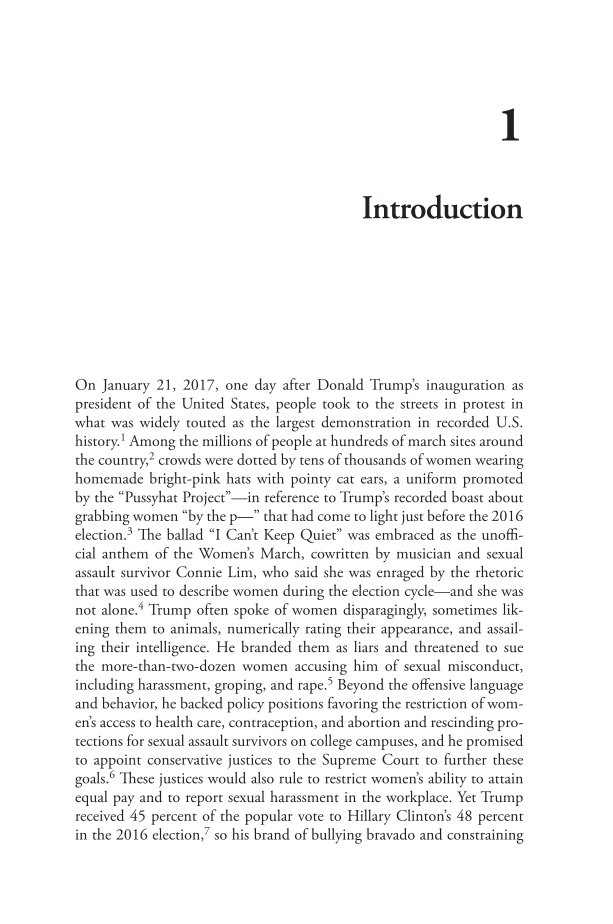1 Introduction On January 21, 2017, one day after Donald Trump’s inauguration as president of the United States, people took to the streets in protest in what was widely touted as the largest demonstration in recorded U.S. history.1 Among the millions of people at hundreds of march sites around the country,2 crowds were dotted by tens of thousands of women wearing homemade bright-pink hats with pointy cat ears, a uniform promoted by the “Pussyhat Project”—in reference to Trump’s recorded boast about grabbing women “by the p—” that had come to light just before the 2016 election.3 The ballad “I Can’t Keep Quiet” was embraced as the unoffi- cial anthem of the Women’s March, cowritten by musician and sexual assault survivor Connie Lim, who said she was enraged by the rhetoric that was used to describe women during the election cycle—and she was not alone.4 Trump often spoke of women disparagingly, sometimes lik- ening them to animals, numerically rating their appearance, and assail- ing their intelligence. He branded them as liars and threatened to sue the more-than-two-dozen women accusing him of sexual misconduct, including harassment, groping, and rape.5 Beyond the offensive language and behavior, he backed policy positions favoring the restriction of wom- en’s access to health care, contraception, and abortion and rescinding pro- tections for sexual assault survivors on college campuses, and he promised to appoint conservative justices to the Supreme Court to further these goals.6 These justices would also rule to restrict women’s ability to attain equal pay and to report sexual harassment in the workplace. Yet Trump received 45 percent of the popular vote to Hillary Clinton’s 48 percent in the 2016 election,7 so his brand of bullying bravado and constraining
Document Details My Account Print multiple pages
Print
You have printed 0 times in the last 24 hours.
Your print count will reset on at .
You may print 0 more time(s) before then.
You may print a maximum of 0 pages at a time.









































































































































































































































